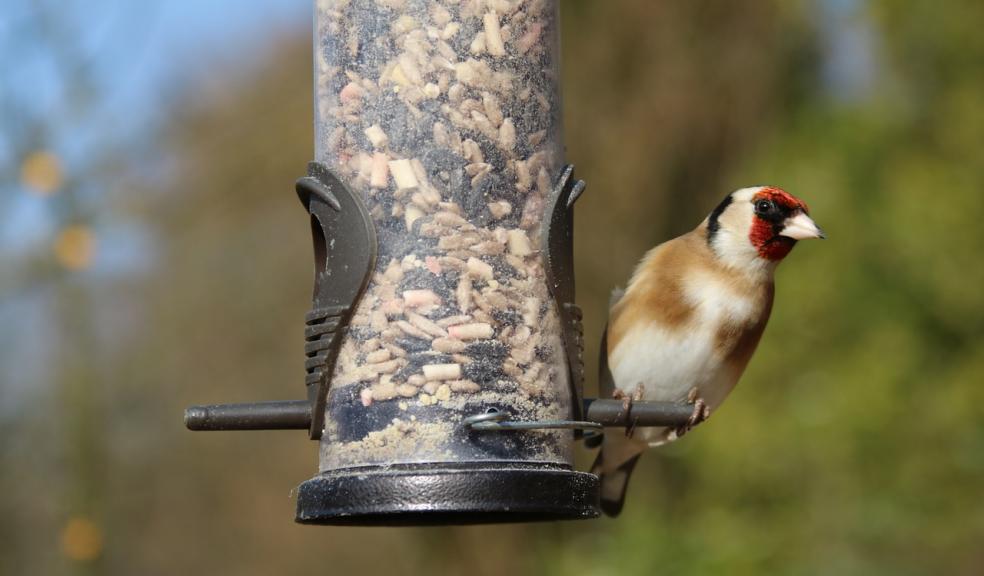
Fill up your feeders: It’s time for RSPB Big Garden Birdwatch 2017 in Plymouth!
More than half a million people are expected to watch and count their garden birds for this year’s Big Garden Birdwatch, organised by the RSPB.
The world’s largest garden wildlife survey (now in its 38th year!) takes place on the 28th, 29th and 30th January 2017. In response to popular demand, this will be the first time ever that the Birdwatch will take place over three days. This time round, Monday is included, to give workers the opportunity to take a screen break and participate from their office gardens.
The public is asked to spend just one hour of the day watching and recording the birds in their garden or local public space, such as parks, and then send their results to the RSPB.
The Big Garden Birdwatch is part of the RSPB’s Giving Nature a Home campaign, aimed at tackling the housing crisis facing the UK’s wildlife. Gardens provide invaluable resources for many species, especially in urban areas where natural habitats are disappearing. The RSPB is asking people to invite wildlife into their own gardens, balconies and outside spaces – where you can put up a nest box for birds, create a pond for frogs and newts or plant a window box for bees. Wherever you live, you can help give nature a home.
Tim Hughes, RSPB spokesperson in the South West, said: “The Big Garden Birdwatch is a fantastic way to get to know your local wildlife, and to really step back to enjoy the birds you get on your doorstep. By sparing just one hour of your time, you’re providing us with valuable information on current numbers in gardens, one of the UK’s richest habitat areas. It’s a fun, easy and rewarding way of helping nature.”
“In our increasingly urban world, ensuring there is still room for wildlife to survive and flourish is key to the survival of many familiar species. The Big Garden Birdwatch provides valuable information about the wildlife using our gardens in winter, enabling the RSPB to monitor trends and declines.”
In 2016, over half a million people counted more than eight million birds in their gardens, and even more are expected to take part this year.
Daniel Hayhow, RSPB Conservation Scientist, said: “With over half a million people now regularly taking part, coupled with over 30 years worth of data, Big Garden Birdwatch allows us to monitor trends and helps us understand how birds are faring. With results from so many gardens, we are able to create a 'snapshot' of the birds visiting at this time of year across the UK. Even if you see nothing during your Big Garden Birdwatch hour, that’s important information too, so please let us know.”
Last year in Plymouth, the house sparrow took the top spot, seen in almost 65% of local gardens. The woodpigeon came in second, spotted in almost 83% of Plymouth gardens. Meanwhile, the goldfinch took third, with 33% of people seeing them on their Plymouth doorsteps, whilst the blackbird and blue tit rounded out the top five.
If the cold weather continues this year, we could see some more unusual birds appearing in UK gardens. Keep an eye out for multiple Scandinavian visitors, such as redwing, fieldfare and waxwing on the lookout for berries. Whilst redwing and fieldfare come to the UK every winter, waxwings come in large numbers only when their food supplies are scarce at home. Bramblings, often found with chaffinch flocks, and jays also join our resident populations, as they search for good supplies of seeds and nuts.
As well as counting all the winged garden visitors, the RSPB is once again asking participants to log some of the other wildlife they have seen throughout the year, such as grass snakes, hedgehogs, stag beetles, stoats and moles.
Daniel added: “Our wildlife is facing a tough time. For example it is estimated that we’ve lost more than half of our hedgehogs in the last 50 years. We're going to include this part of the survey every year now, enabling us to monitor the distribution of our other wildlife as well as trends in bird numbers.”
To take part in Big Garden Birdwatch 2017, simply watch the birds in your garden or other local space (parks, schools, etc.) for one hour at some point over the three days. Only count the birds that land in your garden or local space, not those flying over. Tell us the highest number of each bird species you see at any one time – not the total you see in the hour.
To download your Free Big Garden Birdwatch Pack, visit www.rspb.org.uk/birdwatch
The results of this year’s Big Garden Birdwatch will be published in March 2017.
Big Schools’ Birdwatch has started! This parallel event runs from 3rd January to 17 February 2017. Further information can be found at www.rspb.org.uk/schoolswatch
Tim added: “The RSPB Big Garden Birdwatch is a yearly event that provides a lot of joy for many, and captures the nation with an understanding of the beauty of nature and how important gardens are for wildlife. It takes so little time to make such a big difference. So grab a pen and paper or a laptop, keep your eyes peeled and get the whole family involved! Let’s give nature a home.”











